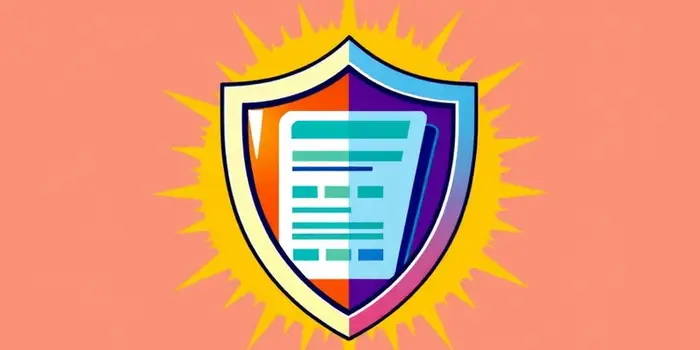Banking overdraft fees are a silent burden for many households, accruing billions of dollars in charges each year. While a one-time $27 fee may seem manageable, the consequences can spiral quickly when multiple transactions hit at once. According to recent studies, U.S. consumers collectively pay around $38 billion annually in overdraft-related costs, and that figure does not include ancillary late or bounced-check penalties. For individuals and families living paycheck to paycheck, avoiding these fees can make a tangible difference.
Fortunately, the financial industry has begun to respond with new products aimed at reducing or eliminating overdraft penalties altogether. By understanding how these services work and comparing the leading options, consumers can find solutions that safeguard their funds without sacrificing convenience or access.
Understanding Overdraft Protection and Its Importance
At its core, overdraft protection is a safety mechanism that allows financial institutions to cover transactions when your checking balance dips below zero. Under a typical arrangement, if you attempt a purchase or payment that exceeds your available funds, the bank can authorize the transaction on your behalf, then charge an overdraft fee. In contrast, a nonsufficient funds (NSF) scenario results in a declined payment with an NSF charge, which may be lower but can still incur merchant fees.
Opting into overdraft protection can prevent declined payments and bounced checks, which may save you from merchant penalties, late charges, and damage to your credit profile. However, many traditional accounts impose steep fees—averaging $27.08 in 2024—each time they process an overdraft. That has spurred demand for alternatives that retain the protective benefit without the heavy price tag.
Regulatory Changes Driving Better Consumer Protections
In response to public outcry and regulatory scrutiny, the Consumer Financial Protection Bureau (CFPB) and the Federal Reserve have strengthened rules around overdraft services. Since 2010, banks have been required to obtain explicit customer permission for overdraft coverage on debit card and ATM transactions. Customers who do not opt in simply have their transactions declined, avoiding any fee.
More recent guidance encourages banks to offer grace periods, cap daily fees, and enhance transparency in fee disclosures. These shifts are partly driven by lawsuits and state-level reforms targeting unfair practices. As a result, leading banks now highlight their fee waivers, show pending balances in real time, and allow consumers to manage settings via mobile apps. By choosing institutions that embrace these changes, account holders gain more control over their finances and avoid unwelcome surprises.
Bank Products with Low or No Overdraft Fees
A wave of customer-focused offerings has emerged, challenging the traditional fee-heavy model. Below, we compare five standout products and the unique features that set them apart.
Ally Bank broke new ground in June 2021 when it eliminated all overdraft fees entirely, introducing its CoverDraft service to provide up to $250 in coverage without penalty. To qualify, customers must meet modest direct deposit requirements and maintain regular account activity. Similarly, TD Bank and U.S. Bank have trimmed fees for small overdrafts by waiving charges when the negative balance stays under $50.
Wells Fargo retains a $35 fee but offers an “Extra Day Grace Period,” giving customers one business day to return their accounts to positive territory. Digital-first challengers like Chime and Capital One stand out for offering no overdraft fees and integrating tools that analyze spending, provide real-time notifications, and even predict impending shortfalls.
Practical Strategies to Minimize Overdraft Penalties
Beyond selecting the right account, there are effective habits and tools you can adopt to steer clear of overdraft charges altogether.
- Link a savings account or line of credit for automatic transfers to cover shortfalls.
- Set up account balance alerts on your mobile app to receive timely notifications.
- Opt out of optional overdraft coverage so that transactions are declined at no cost.
- Use a “safe account” or checkless checking option to prevent any overdraft activity.
- Monitor pending transactions and schedule bill payments when you know funds will be available.
- Leverage budgeting apps that categorize spending and warn of low balances.
Pairing these tactics with regular balance reviews can significantly reduce the risk of unexpected fees. If your bank offers a transfer-based protection service, you can often move funds at no charge from a linked savings account, preserving your checking balance without incurring penalties.
How to Choose the Right Checking Account
Finding the ideal checking account involves weighing multiple factors, not just overdraft fees. Ask yourself whether you need free ATM access, mobile check deposit, or reimbursement for out-of-network fees. Also, consider any monthly maintenance charges and the minimum balance needed to waive them.
Key questions to guide your selection include:
- What is the minimum opening deposit and ongoing balance requirement?
- Are there conditions to qualify for grace periods or fee waivers?
- How simple is it to link external savings or credit lines?
- Do mobile alerts and online tools provide real-time spending visibility?
- Is direct deposit required to access enhanced overdraft benefits?
Carefully reviewing the account agreement and using comparison tools can help you match your banking habits with the appropriate features. In some cases, hybrid models—combining a traditional bank and a fintech account—provide the best blend of services.
Looking Ahead: Trends in Overdraft Protection
The future of overdraft protection is likely to be shaped by technology and consumer advocacy. Artificial intelligence and machine learning are already being used to predict cash flow patterns, allowing banks to authorize small overdrafts based on projected deposits. At the same time, mobile-first institutions emphasize transparent fee structures and customer-friendly defaults.
Legislators and regulators continue to explore measures that could further enhance consumer protections, such as capping overdraft fees or mandating extended grace periods. As public awareness grows, financial providers are under increasing pressure to innovate and deliver fair, accessible solutions.
Ultimately, the combination of strategic account selection, disciplined money management, and smart use of technology will empower you to balance convenience and financial security, safeguarding your spending and avoiding unexpected penalties.
References
- https://www.wellsfargo.com/checking/overdraft-services/
- https://www.nerdwallet.com/article/banking/overdraft-fees-what-banks-charge
- https://www.td.com/us/en/personal-banking/overdraft-services
- https://www.fdic.gov/consumer-resource-center/2021-12/overdraft-and-account-fees
- https://www.ally.com/overdraft/
- https://www.bankrate.com/banking/checking/overdraft-fees-vs-nsf-fees/
- https://www.usbank.com/bank-accounts/checking-accounts/checking-customer-resources/overdraft-protection.html










